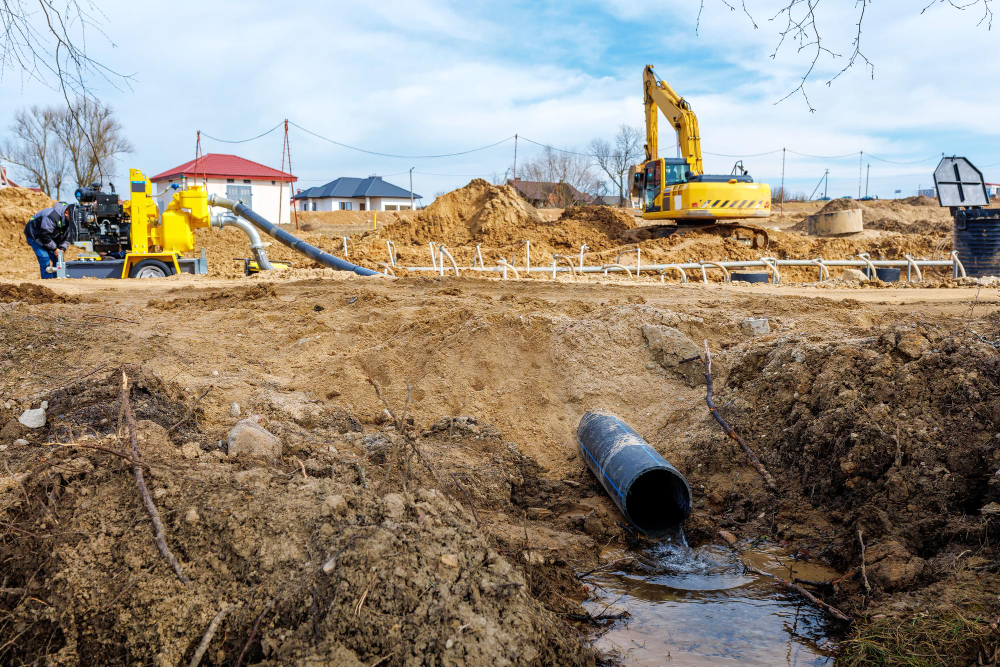In the dynamic world of construction, managing water effectively is a game-changer. The presence of water at a construction site can be a formidable adversary, impacting everything from soil stability to the safety of workers. The solution lies not just in removing the water but in doing so in a way that supports both the project and the environment. This introduction paves the way for an insightful exploration into the multifaceted role of dewatering in construction. It’s a process that transcends mere water removal, involving intricate strategies and equipment, particularly dewatering pipes, which stand as the unsung heroes in safeguarding the integrity and efficiency of construction projects.
The Crucial Role Of Dewatering Pipes In Construction
Dewatering is vital in construction, particularly where wet soil threatens foundation stability. The strategic use of dewatering pipes is crucial in high water table areas, removing excess water and preserving structural integrity. These pipes prevent sediment displacement, mitigating risks like groundwater leakages, sand soiling, upheaval failures, and basement flotation. More than just maintaining structures, dewatering is pivotal for environmental safety and protecting workers on site. Dewatering pipes, therefore, play a dual role: they safeguard the building’s foundation while ensuring a safe, efficient construction environment, making them an indispensable element in any construction project.

Ensuring Safety And Eco-Protection Through Proper Dewatering
Improper dewatering using inadequate dewatering pipes not only increases tripping hazards on wet grounds but also harms construction equipment. Faulty groundwater disposal, especially through ineffective dewatering pipes, risks contaminating local water bodies with toxins, impacting sensitive ecosystems. Additionally, stagnant water at sites becomes a breeding ground for disease-spreading pests, highlighting the crucial need for proper dewatering and disposal practices.
Navigating Dewatering Discharge Options Effectively
Exploring suitable dewatering systems is crucial in construction to ward off pests and ensure environmental safety. Our construction solutions page offers insights and equipment rental for various dewatering needs.
- On-Site Dewatering
Utilizing dewatering pipes, retaining and repurposing water on-site, allowing excess to evaporate. This method, ideal for pollutant-free water, requires ample space and often specific permits, especially when groundwater remediation equipment is involved. - Adjacent Land Discharge
With an agreement, you can use dewatering pipes to channel water to nearby unoccupied land. A comprehensive legal agreement should cover aspects like compensation and water quality assessment. - Off-Site Discharge
Here, containment tanks and robust dewatering pipes are used to transport water for applications such as irrigation, depending on its quality. - Sewer System Discharge
If water meets certain standards, it can be released into a storm sewer system. This requires adherence to testing protocols, fee payment, and acquiring permits from sanitary agencies. - Off-Site Treatment
For water with hazardous toxins, dewatering pipes transport it to treatment facilities, ensuring no environmental harm.
Remember, for water resulting from precipitation, direct discharge from the site is possible if it’s sediment-laden but pollutant-free.
Optimal Location Selection For Water Discharge
During the dewatering process, using efficient dewatering pipes is essential to prevent soil erosion on your site. Choose the right location for storing and discharging water. Key considerations include avoiding water pumping into slopes, carefully selecting discharge locations, removing sediments effectively with tools like sediment bags, ensuring no contamination with grease or chemicals, and securing necessary local permits. These steps are crucial for a successful and responsible dewatering process.
Streamlining The Dewatering Process In Construction
- Evaluating Water Quality for Effective Dewatering
The dewatering process begins with assessing water and distinguishing between surface and groundwater. Tests for sediments and contaminants are essential, guiding the use of dewatering pipes. - Navigating Permit Requirements in Dewatering
Obtaining necessary permits is crucial, adhering to varying state and federal regulations based on water type and site location. - Securing Dewatering Equipment
Renting dewatering equipment like boxes or pumps is a practical solution for construction sites, allowing flexible and efficient water management. - Treating Water Pre-Dewatering
Treatment involves sediment removal using dewatering bags, tanks, and specialized containers, ensuring quality water discharge through dewatering pipes. - Calculating Dewatering Quantity
Determining the total dewatering quantity requires using the Forchheimer equation and well-yield expressions, ensuring accuracy in the dewatering process.
Benefits Of Dewatering Your Construction Site
- Preserving Ground Stability and Equipment Safety through Dewatering
Dewatering activities maintain dry and stable ground conditions, which is crucial for preventing water damage to construction materials and equipment. - Ensuring Stable Soil and a Safe Work Area
Dewatering your site using effective dewatering pipes keeps the ground dry and stable, preventing mudslides and ensuring a safe, ready worksite. - Enhancing Worker Safety
Removing water with dewatering pipes reduces slippage and fall risks and minimizes long-term health hazards from contaminated water. - Maintaining Project Scheduling
Effective dewatering averts delays, keeping construction projects on time and within budget. - Safeguarding Valuable Equipment
Dewatering mitigates the risk of damage to machinery and materials caused by excess moisture. - Reducing Environmental Impact
Proper dewatering techniques help protect local ecosystems from erosion and contamination, preserving the surrounding environment.
Concluding Thoughts On Dewatering In Construction
Effective dewatering, especially using dewatering pipes, is vital for construction success, ensuring soil stability, worker safety, and environmental care. For specialized dewatering solutions, including quality pipes, Bigfoot Pipe And Piling stands ready to support your project’s needs.
